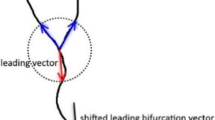Abstract
Optic disc localization is of great diagnostic value related to retinal diseases, such as glaucoma and diabetic retinopathy. However, the detection process is quite challenging because positions of optic discs vary from image to image, and moreover, pathological changes, like hard exudates or neovascularization, may alter optic disc appearance. In this paper, we propose a robust approach to accurately detect the optic disc region and locate the optic disc center in color retinal images. The proposed technique employs a kernelized least-squares classifier to decide the area that contains optic disc. Then connected-component labeling and lumination information are used together to find the convergence of blood vessels, which is thought to be optic disc center. The proposed method has been evaluated over two datasets: the Digital Retinal Images for Vessel Extraction (DRIVE), and the Non-fluorescein Images for Vessel Extraction (NIVE) datasets. Experimental results have shown that our method outperforms existing methods, achieving a competitive accuracy (97.52 %) and efficiency (1.1577s).















Similar content being viewed by others
References
Akita K, Kuga H (1982) A computer method of understanding ocular fundus images. Pattern Recogn 15(6):431–443
Chaichana T, Yoowattana S, Zhonghua S, Tangjitkusolmun S, Sookpotharom S, Sangworasil M (2008) Edge detection of the optic disc in retinal images based on identification of a round shape. Proc. Int. Symp. Communications and Information Technologies 670–674
Engelgau MM, Geiss LS, Saaddine JB et al (2004) The evolving diabetes burden in the United States[J]. Ann Intern Med 140(11):945–950
Foracchia M, Grisan E, Ruggeri A (2004) Detection of optic disc in retinal images by means of a geometrical model of vessel structure. IEEE Trans Med Imag 23(10):1189–1195
Gagnon L, Lalonde M, Beaulieu M, Boucher M-C (2001) Procedure to detect anatomical structures in optical fundus images. Proc SPIE Med Imaging Image Process 4322:1218–1225
Henriques JF, Caseiro R, Martins P et al (2012) Exploiting the circulant structure of tracking-by-detection with kernels[M]//Computer Vision–ECCV 2012. Springer, Berlin, pp 702–715
Hoover A, Goldbaum M (2003) Locating the optic nerve in a retinal image using the fuzzy convergence of the blood vessels. IEEE Trans Med Imaging 22(8):951–958
Lu S, Lim J-H (2011) Automatic optic disc detection from retinal images by a line operator. IEEE Trans Biomed Eng 58(1):88–94
Lupascu CA, Tegolo D, Di Rosa L (2008) Automated detection of optic disc location in retinal images. Proc. 21th IEEE Int, Symp. Computer Based Medical Systems 17–22
Mendels F, Heneghan C, Thiran J (1999) Identification of the optic disk boundary in retinal images using active contours. Proceedings of Irish Machine Vision and Image Processing Conference (IMVIP) 1999, IEEE, pp. 103–115
Mendonca AM, Sousa A, Mendonca L, Campilho A (2013) Automatic localization of the optic disc by combining vascular and intensity information. Comput Med Imaging Graph 37:409–417
NIVE-database. Avaliable from: URL: https://github.com/temporaryMSJ/NIVE-database
Park M, Jin JS, Luo S (2006) Locating the optic disc in retinal images. International Conference on Computer Graphics, Imaging and Visualisation, IEEE Computer Society, pp. 141–145
Salazar-Gonzalez AG, Li Y, Liu X (2011) Optic disc segmentation by incorporating blood vessel compensation. Proc. Int. Workshop on Computational Intelligence In Medical Imaging (CIMI) 1–8
Sattar F, Campilho A, Kamel M (2014) Optic disk localization for gray-scale retinal images based on patch filtering. ICIAR 2014:277–284
Sekhar S, Al-Nuaimy W, Nandi AK (2008) Automated localisation of retinal optic disk using Hough transform. In: 5th IEEE International Symposium on Biomedical Imaging: From Nano to Macro, IEEE, pp. 1577–1580
Sinha N, Babu RV (2012) Optic disk localization using l1 minimization. In: IEEE international conference on image processing 2829–2832
Staal JJ, Abramoff MD, Niemeijer M, Viergever MA, van Ginneken B (2004) Ridge based vessel segmentation in color images of the retina. IEEE Trans Med Imaging 23:501–509
Wu Y, Lim J, Yang MH (2013) Online object tracking: a benchmark[C]//Proceedings of the IEEE conference on computer vision and pattern recognition 2411–2418
Ying H, Zhang M, Liu J-C (2007) Fractal-based automatic localization and segmentation of optic disc in retinal images. Proc. 29th Annu. Int. Conf. IEEE Engineering in Medicine and Biology Society 4139–4141
Youssif AAA, Ghalwash AZ, Ghoneim AASA (2008) Optic disc detection from normalized digital fundus images by means of a vessels’ direction matched filter. IEEE Trans Med Imag 27(1):11–18
Acknowledgements
The authors would like to thank all reviewers for their helpful suggestions and constructive comments. The corresponding authors of this paper are Bin Sheng (email: shengbin@cs.sjtu.edu.cn) and Qiang Wu (email: wyansh@163.com). The work is supported by the National Natural Science Foundation of China (Nos. 61572316, 61133009), National High-tech R&D Program of China (863 Program) (Grant No. 2015AA015904), the Science and Technology Commission of Shanghai Municipality Program (Nos. 13511505000, 16DZ050110), the Interdisciplinary Program of Shanghai Jiao Tong University (No. 14JCY10), a grant from the Research Grants Council of Hong Kong (Project No.: 28200215), a grant from The Education University of Hong Kong (Project No: FLASS/DRF/ECR-7).
Author information
Authors and Affiliations
Corresponding author
Rights and permissions
About this article
Cite this article
Wang, R., Zheng, L., Xiong, C. et al. Retinal optic disc localization using convergence tracking of blood vessels. Multimed Tools Appl 76, 23309–23331 (2017). https://doi.org/10.1007/s11042-016-4146-z
Received:
Revised:
Accepted:
Published:
Issue Date:
DOI: https://doi.org/10.1007/s11042-016-4146-z




